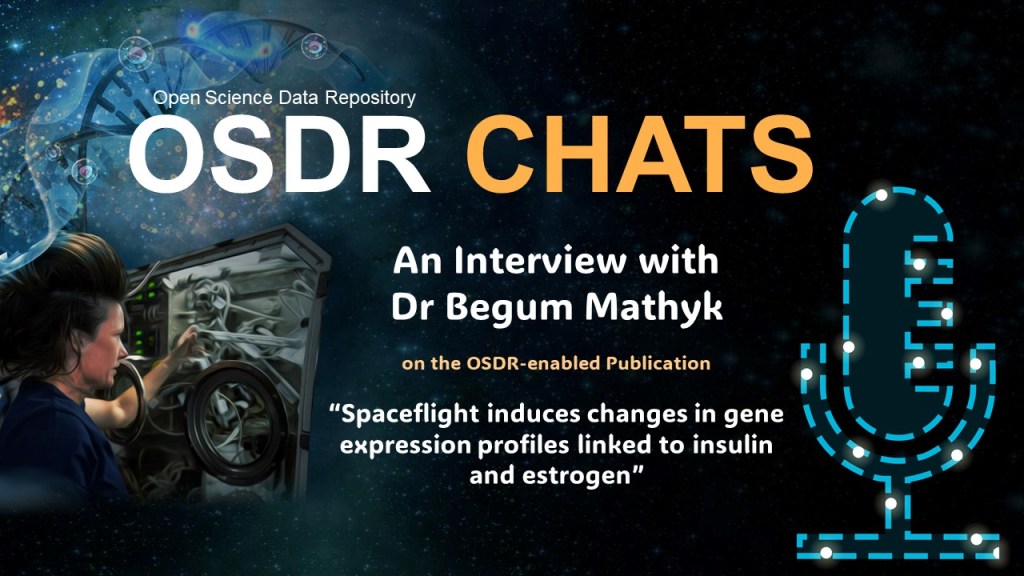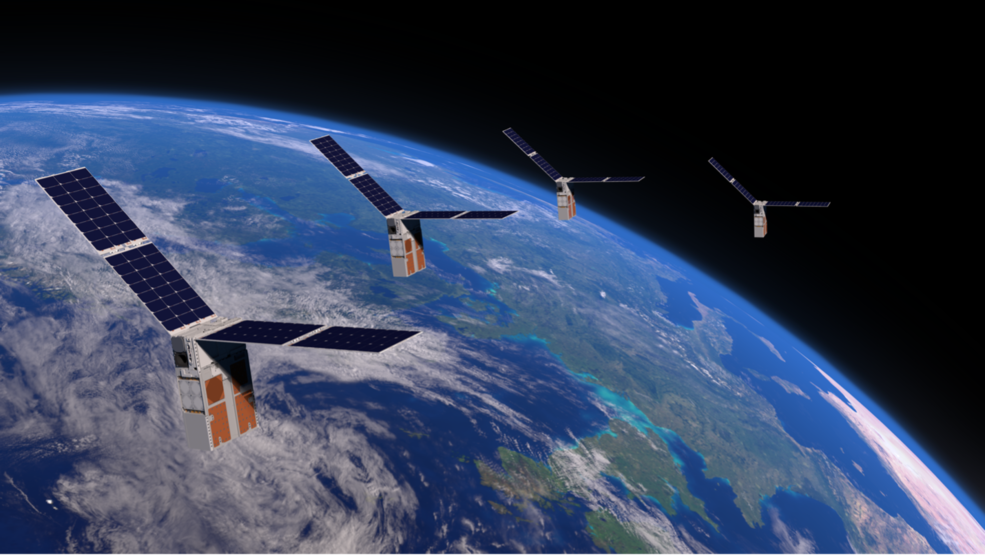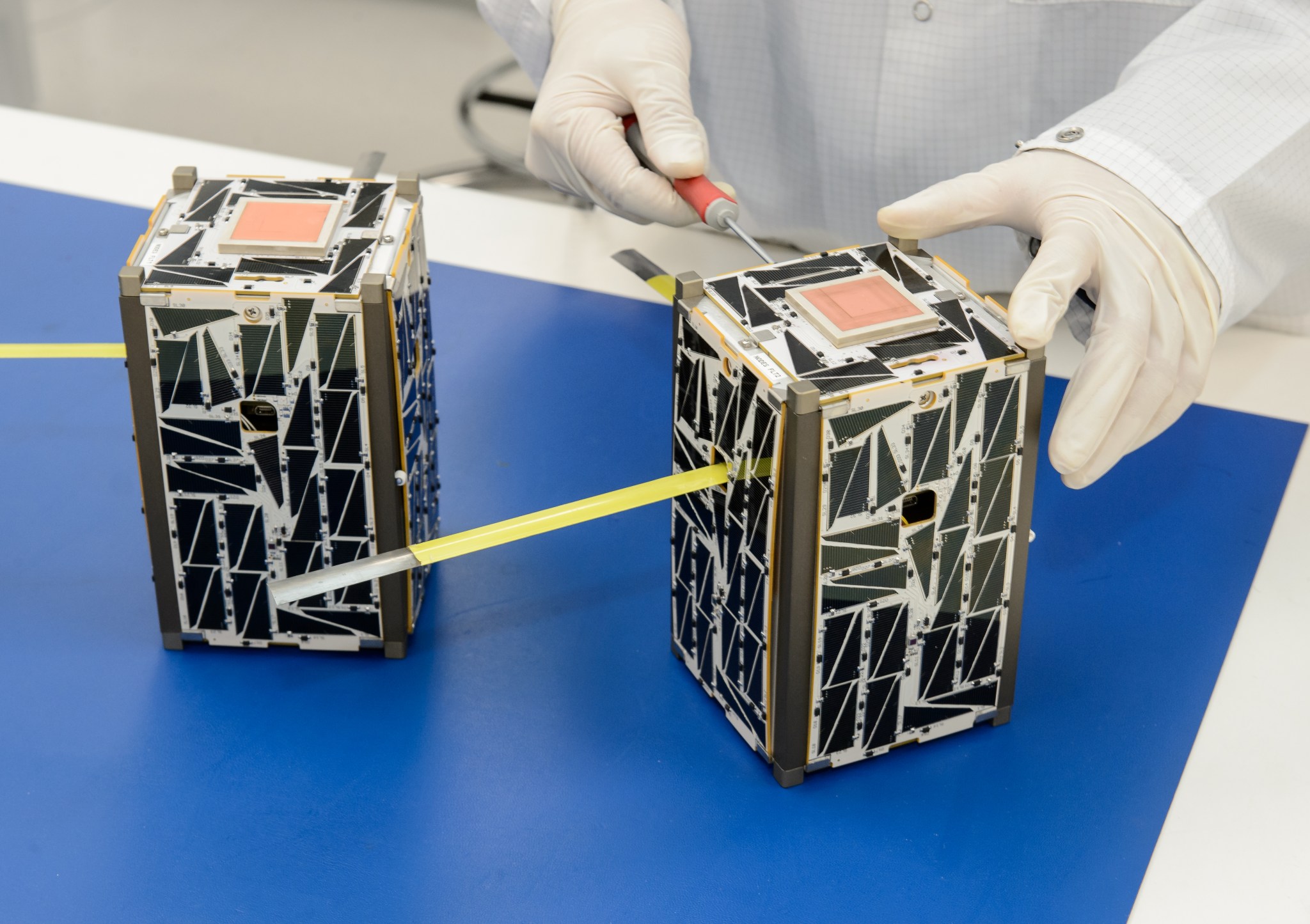Teamwork makes the dream work, and at NASA that doesn’t apply only to humans. Researchers at NASA’s Ames Research Center in California’s Silicon Valley are developing satellite swarms, which are groups of spacecraft working together as a unit, without being managed individually by mission controllers. A swarm’s ability to perform autonomously will make new types of science and exploration possible, particularly as they venture farther into deep space.
Ames’ work on swarm technologies has been underway for decades. This summer, swarm science will reach a major milestone as NASA launches the Starling mission into space. It will test technologies that let four spacecraft operate in a coordinated manner without resources from the ground. And the results of Starling’s experiments will be of great interest to researchers at Ames who, right now, are preparing a future swarm mission to study the Sun.
The Road to Successful Swarms
A swarm is not to be confused with a constellation, although both refer to a group of spacecraft working toward a common goal. If you’re operating a lot of spacecraft individually, you’ve got a constellation. While useful in certain scenarios, scaling up their numbers can make costs and mission complexity skyrocket.
Contrast that with a multi-talented, self-coordinating swarm. These spacecraft know how to communicate with each other, monitor and maintain their relative spacing, and maneuver to get where each needs to be. They’ll be able to collect data as a group, deciding which member of the team is best placed to take the optimal measurement and which should relay that data to Earth. This greatly simplifies the job of ground controllers who would otherwise need to command each spacecraft to meet a mission’s science objectives.
“In the past, that couldn’t be done affordably because we had to control each spacecraft individually,” said Butler Hine, a flight project manager at Ames. “But the emergence of small satellite technologies gave us new possibilities and a chance to change the way we operate them.”
Ames became a pioneer in the use of CubeSats and small satellites (SmallSats) to run innovative, cost-effective missions, testing technologies and performing biology experiments in space. Once CubeSats and SmallSats had matured, Hine became what he jokingly calls “the swarm czar.” His job was to create a roadmap of swarm technologies, identifying those already in existence as well as the missing technologies Ames would need to invest in to make swarm science missions a reality. He looked at core technologies Ames was investigating and helped plot a course to further investments to make swarm science missions a reality.
An early example of swarm coordination was the Nodes mission. In May 2016, the project put two satellites into Earth orbit to test their ability to communicate and negotiate which would downlink their data to mission control on the ground.
Two spacecraft a very small swarm make. But Nodes marked an important step. After all, good communication is key to the success of any team.
Building on that foundation, researchers at Ames developed the Distributed Spacecraft Autonomy project. DSA is maturing technologies critical for future swarms via simulation studies and by launching spacecraft. It will give a swarm the ability to plan and schedule for itself which operations the satellites conduct under different conditions. The swarm could self-determine when and where the most fruitful science observations should be made and delegate the job to the most appropriate individual at a given time. The DSA team’s virtual simulations to test out their swarming algorithms included operating 100 SmallSats in a coordinated fashion. Soon, DSA will be tested in space for the first time by all four Starling spacecraft.
These shared planning abilities have deep roots at Ames, particularly in aeronautics and human spaceflight research. For example, Ames leads NASA’s Astrobee project, a set of free-floating robots aboard the International Space Station that are learning to coordinate and perform support tasks without astronaut intervention.
Swarms Enabling Science
The farther we reach into the solar system with cooperative teams of spacecraft, the more important their autonomy will become. The time it takes for communication signals to travel and constraints on data bandwidth make direct control of multiple deep-space satellites impractical. And swarms provide new opportunities, such as positioning multiple small spacecraft to function as one very large observatory, like a telescope with a huge field of view.
“Swarms give you a lot of additional capabilities,” said Howard Cannon, Starling’s project manager at Ames. “They let you make multi-point science measurements. They’re more robust, thanks to the redundancy of multiple spacecraft. And since they can react quickly and autonomously to the data they collect, they can say, ‘Oh, there’s something interesting! I need to go look at that.’”
Those qualities will certainly be appreciated on Butler Hine’s latest effort. Today, he is the project manager for HelioSwarm, a mission managed at Ames that will send a swarm to uncover some mysteries of solar wind. Eight small satellites and one central “hub” spacecraft will capture the first simultaneous, in-space measurements of solar wind turbulence over a wide range of distances. Solar wind turbulence refers to the small and mid-scale fluctuations in the flow of charged particles continuously streaming from the Sun.
We tend to think of synergy as something human teams achieve when they’re working together in harmony – but it’s not so different for spacecraft. The NASA experts shepherding spacecraft swarms to maturity are aiming for the same with these collaborative satellites that hold such promise for the future of space science.
Partners:
- NASA’s Small Spacecraft Technology program within the Space Technology Mission Directorate funds and manages the Starling mission.
- NASA’s Ames Research Center in Silicon Valley, California, leads the Starling project, providing payload avionics and software, spacecraft integration and test, and mission operations.
- NASA’s Game Changing Development program within the Space Technology Mission Directorate provides funding for the DSA experiment.
For news media:
Members of the news media interested in covering this topic should reach out to the NASA Ames newsroom.
























